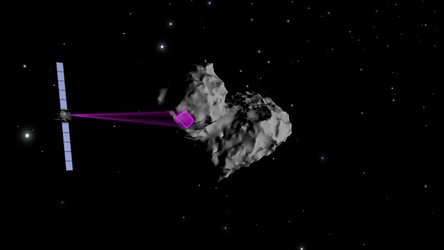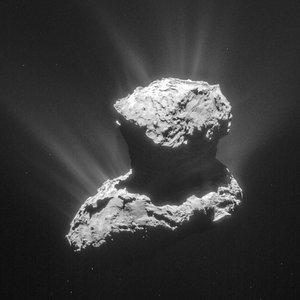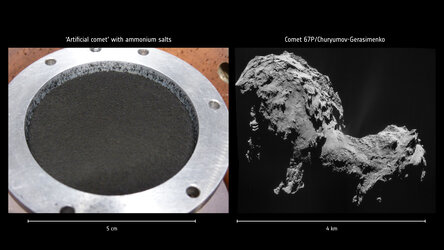

Science & Exploration
Rosetta’s instruments (black background)
The Rosetta orbiter will analyse comet 67P/Churyumov-Gerasimenko and its environment using a suite of 11 instruments:
- ALICE: Ultraviolet Imaging Spectrometer – (characterising the composition of the comet nucleus and coma)
- CONSERT: Comet Nucleus Sounding Experiment by Radio wave Transmission (studying the internal structure of the comet with lander Philae)
- COSIMA: Cometary Secondary Ion Mass Analyser (studying the composition of the dust in the comet’s coma)
- GIADA: Grain Impact Analyser and Dust Accumulator (measuring the number, mass, momentum and velocity distribution of dust grains in the near-comet environment)
- MIDAS: Micro-Imaging Dust Analysis System (studying the dust environment of the comet)
- MIRO: Microwave Instrument for the Rosetta Orbiter (investigating the nature of the cometary nucleus, outgassing from the nucleus and development of the coma)
- OSIRIS: Optical, Spectroscopic, and Infrared Remote Imaging System Camera (a dual camera imaging system consisting of a narrow angle (NAC) and wide angle camera (WAC) and operating in the visible, near infrared and near ultraviolet wavelength range)
- ROSINA: Rosetta Orbiter Spectrometer for Ion and Neutral Analysis (determining the composition of the comet's atmosphere and ionosphere, and measuring the temperature, velocity and density of the gas flow, comprising: DFMS (Double-focusing mass spectrometer), RTOF (Reflectron Time-Of-Flight mass spectrometer) and COPS (Comet Pressure Sensor))
- RPC: Rosetta Plasma Consortium (studying the plasma environment of the comet, comprising: ICA (Ion Composition Analyser), IES (Ion and Electron Sensor), LAP (Langmuir Probe), MAG (Fluxgate Magnetometer), MIP (Mutual Impedance Probe), PIU (Plasma Interface Unit))
- RSI: Radio Science Investigation (tracking the motion of the spacecraft to infer details of the comet environment and nucleus)
- VIRTIS: Visible and Infrared Thermal Imaging Spectrometer (studying the nature of the comet nucleus and the gases in the coma)





